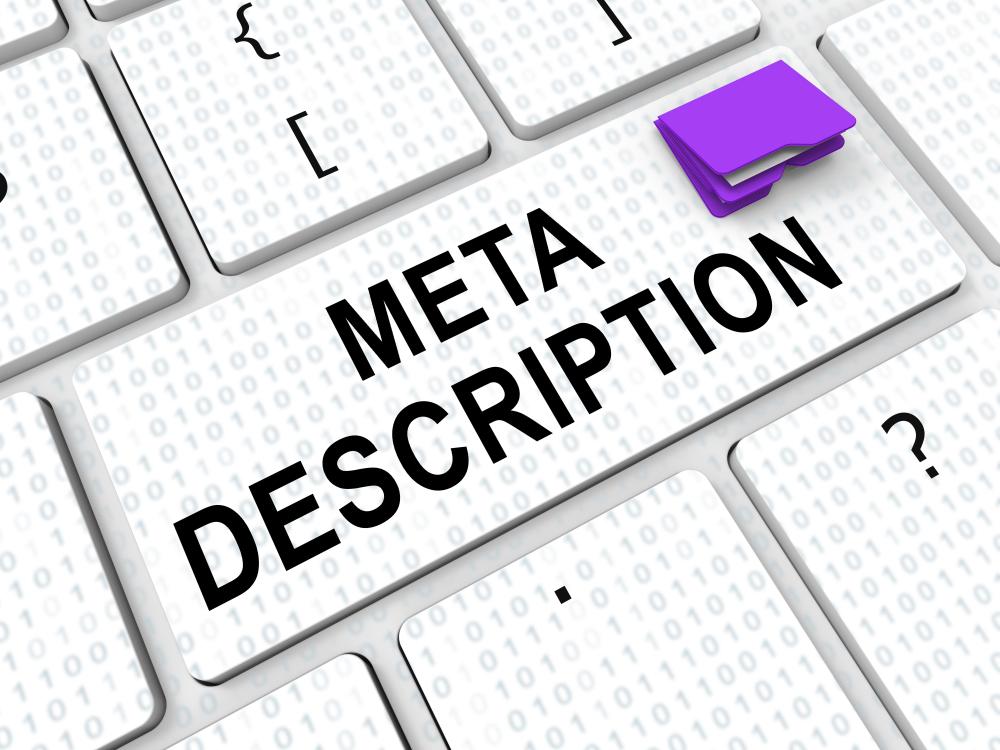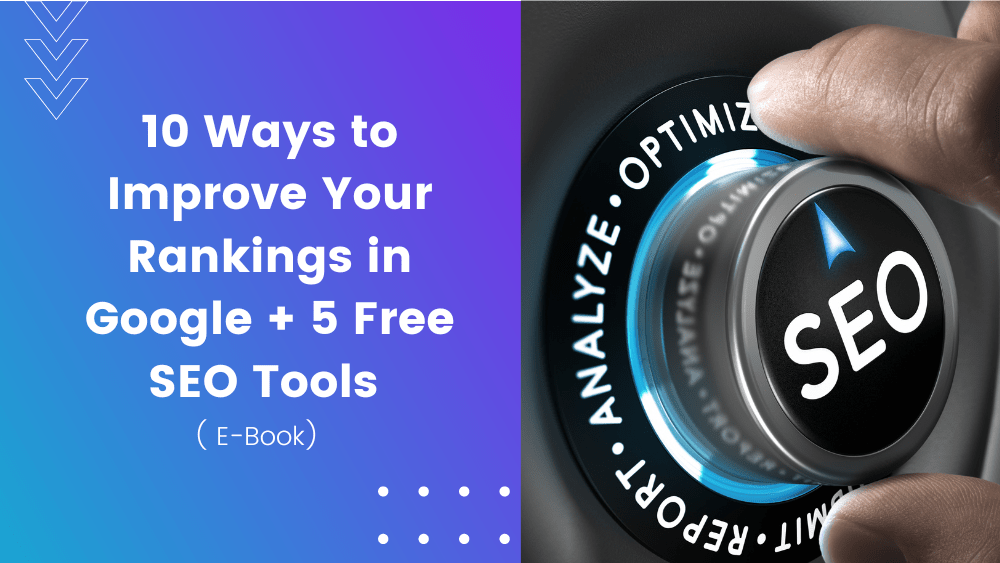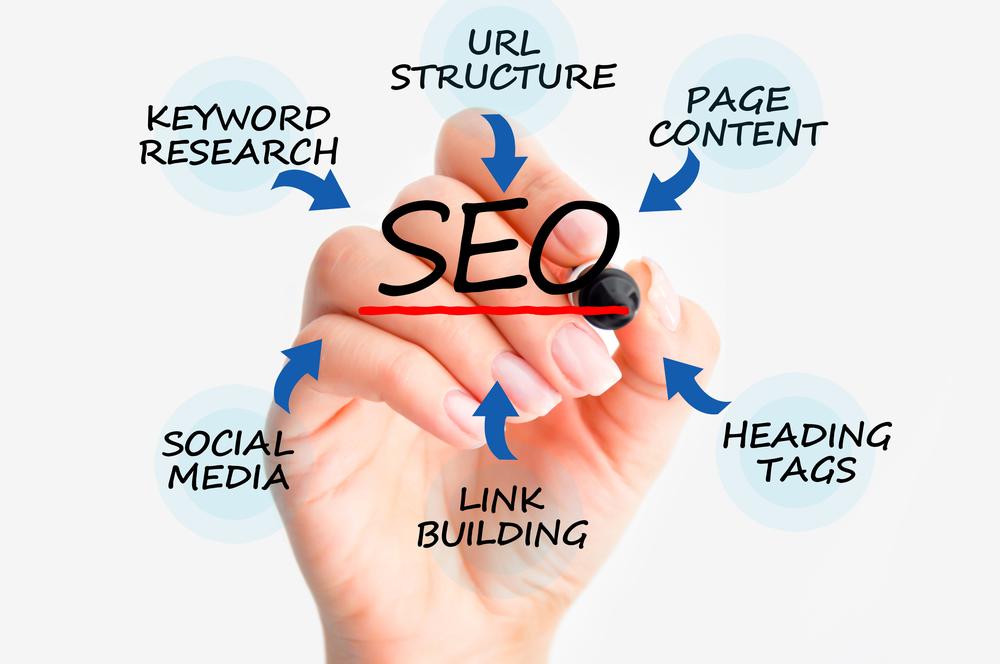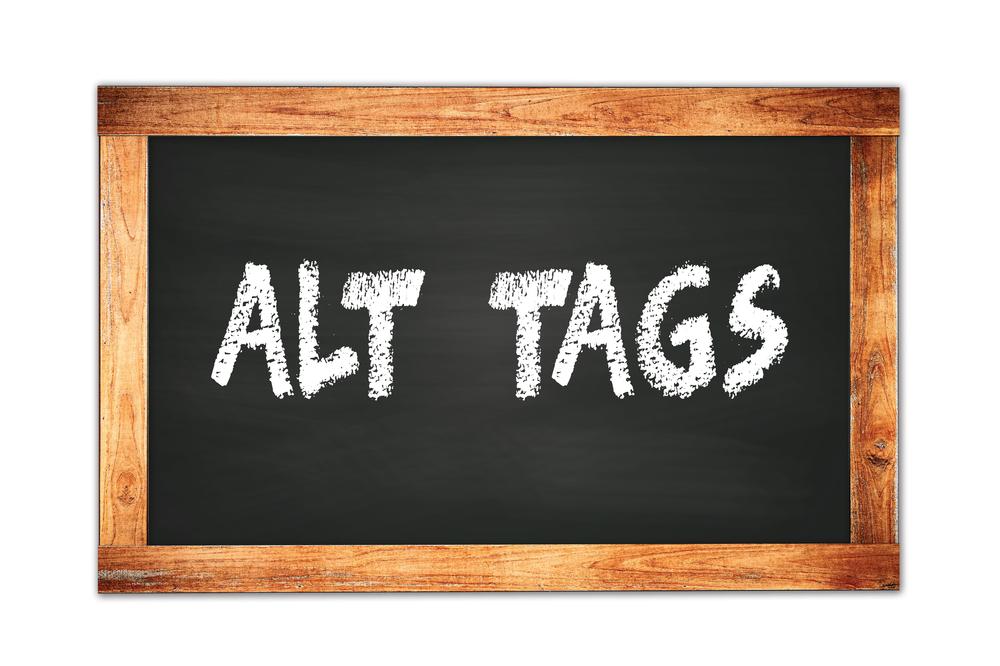10 Ways to Improve Your Rankings in Google + 5 Free SEO Tools ( E-Book)
If your website is not showing up on the first page of Google’s search results, you’re missing out on a significant amount of traffic and potential customers. This e-book aims to provide you with practical and actionable strategies for improving your website’s rankings in Google, so you can reach more people and grow your business.
1- Conduct keyword research to determine which search terms your target audience uses to find businesses like yours. Use these keywords in your website content and meta tags.
Keyword research is one of the foundational elements of any successful search engine optimization (SEO) strategy. Conducting thorough keyword research will help you identify the specific words and phrases your target audience uses when searching for products or services that are relevant to your business.
Various keyword research tools are available to help you identify popular search terms in your industry. Google Keyword Planner is a free tool that can provide insights into the search volume, competition, and suggested bids for specific keywords. Other popular tools include SEMrush, Ahrefs, and Moz.
When conducting keyword research, it’s important to focus on relevant, long-tail keywords that accurately reflect your products or services. For example, instead of targeting a broad keyword like “shoes,” a more specific long-tail keyword like “women’s running shoes” would be more effective.
2- Optimize your website’s title tags and meta descriptions to include relevant keywords and accurately describe your content.
Optimizing your website’s title tags and meta descriptions is another essential step in improving your rankings in Google’s search results. Title tags and meta descriptions are elements of your website’s HTML code that provide brief descriptions of your website’s pages to search engines and users.

Title tags are the clickable headlines that appear in search results and browser tabs when someone visits your website. A well-written title tag should accurately describe the page’s content while incorporating relevant keywords.
Meta descriptions are brief summaries of your page’s content that appear below the title tag in search results. Like title tags, meta descriptions should be optimized with relevant keywords and accurately describe the page’s content.
When optimizing your title tags and meta descriptions, it’s essential to keep them concise and relevant. Title tags should ideally be no more than 60 characters, while meta descriptions should be no more than 155 characters. This helps ensure that the title and description appear in search results and are not truncated.
It’s also important to avoid using the same title tags and meta descriptions on multiple pages of your website. Each page should have a unique, descriptive title and meta description that accurately reflects its content.
3- Create high-quality, informative content optimized for your target keywords and provides value to your audience. This can include blog posts, articles, videos, and more.
Creating high-quality, informative content optimized for your target keywords is an effective way to improve your rankings in Google’s search results and attract customers to your website.
Completing keyword research to identify relevant and high-traffic keywords related to your business is crucial for creating content that ranks well in search engines, and once you have a list of keywords, you can begin creating optimized content for those keywords. This can include blog posts, articles, videos, infographics, and more.
When creating content, it’s essential to focus on quality over quantity. High-quality content providing value to your audience is more likely to be shared and linked to by other websites, which can improve your website’s search engine rankings. This type of content should be well-researched and well-written and provide valuable information to your audience.
In addition to creating high-quality content, optimizing that content for your target keywords is invaluable. This includes incorporating those keywords naturally into your content’s titles, headings, and body text. However, it’s vital to avoid over-optimizing your content with too many keywords, as this can harm your rankings and make your content appear spammy to search engines and users.
Another essential element of creating high-quality content is to ensure that it’s easy to read and visually appealing. This can include using subheadings, bullet points, and images to break up long blocks of text and make your content more engaging to readers.
4- Build high-quality backlinks from other reputable websites to improve your website’s authority and credibility.
Building high-quality backlinks is a critical factor in improving your website’s rankings in Google’s search results. Backlinks are the links from other websites that point to your website, indicating to search engines that your content is valuable and trustworthy. Your website will appear more authoritative and credible to search engines, and its high-quality backlinks can improve your rankings for relevant keywords.
However, not all backlinks are created equal. In order to improve your website’s rankings, it’s important to build high-quality backlinks from other reputable websites in your industry or niche. This can include industry associations, news sites, blogs, and other relevant websites trusted by search engines and your target audience.
To build high-quality backlinks, you can employ several strategies. One practical approach is creating high-quality content that other websites will likely link to. This can include original research, data-driven insights, or thought-provoking articles that provide value to your target audience. By creating relevant and engaging content, you can attract backlinks from other websites that find your content valuable.
Another effective strategy is to engage in outreach to other websites in your industry. This can involve contacting website owners or bloggers and asking them to consider linking to your content. However, it’s essential to approach this strategy carefully and avoid spammy or aggressive tactics that could harm your website’s reputation or rankings.
In addition to creating high-quality content and outreach, you can use several other strategies to build high-quality backlinks. These can include participating in industry forums, guest blogging on other relevant websites, and leveraging social media to share your content and attract links.
5- Use header tags (H1, H2, H3, etc.) to help search engines understand the organization of your website and structure your content.
Header tags (H1, H2, H3, etc.) are a critical aspect of on-page optimization for improving your website’s rankings in search engine results pages (SERPs). These tags help search engines understand the structure and hierarchy of your website’s content, which makes it easier for them to crawl and index your website. In addition, header tags also help users quickly scan and understand the organization of your content.
To effectively use header tags, it’s critical to structure your content hierarchically. The H1 tag should be used for the main title of your page, which should contain your primary keyword. Subsequent header tags (H2, H3, etc.) can then be used to organize your content into subtopics, with each subtopic being more specific and detailed than the previous one.
Header tags can also make your content more readable and engaging for users. By breaking up your content into smaller sections with clear headings, users can quickly scan it and find the information they seek. This can improve the user experience on your website and encourage users to stay on your site longer, which can also signal to search engines that your content is relevant and useful.
However, it’s important to use header tags in moderation and avoid over-optimizing your content with too many header tags. Too many header tags can make your content appear spammy and challenging to read, harming your website’s rankings and user engagement.
6- Optimize your website’s images with relevant alt tags and descriptive filenames to make them more accessible and understandable to search engines.
Optimizing your website’s images with relevant alt tags and descriptive filenames is a vital aspect of on-page optimization for improving your website’s rankings in SERPs. When search engines crawl your website, they not only look at your text content but also analyze the images on your site. Optimizing your images with relevant alt tags and descriptive filenames can help search engines understand the context and relevance of your images, improving your website’s visibility and rankings for relevant search queries.
Alt tags are HTML attributes that provide alternative text descriptions for images on your website. These descriptions are important for users who have visual impairments or use screen readers to access your website. Alt tags can also help search engines understand the content and context of your images, as they are able to read the alt text associated with your images.
To optimize your website’s images with relevant alt tags, you should use descriptive and meaningful text that accurately describes the content of your image. For example, instead of using a generic alt tag like “image001.jpg”, you might use a more descriptive one like “red sports car on the highway”. This not only makes your website more accessible to users with visual impairments but also helps search engines understand your image’s relevance to specific search queries.
In addition to using relevant alt tags, it’s also essential to use descriptive filenames for your images. Instead of using generic filenames like “IMG_1234.jpg”, you should use descriptive filenames that accurately describe the content of your image. For example, a beach sunset photo might be named “beach-sunset.jpg”. Descriptive filenames help search engines understand the relevance of your images and make it easier for users to identify and share your images on social media and other platforms.
7- Ensure your website is mobile-friendly and loads quickly, as page speed is a factor in Google’s ranking algorithm.
Having a mobile-friendly website that loads quickly is a critical aspect of on-page optimization for improving website rankings in SERPs. With the majority of internet traffic now coming from mobile devices, your website must be optimized for mobile users to provide a positive user experience.
Google has been increasingly emphasizing mobile-friendliness as a ranking factor in recent years. In 2018, it introduced mobile-first indexing, which means that Google primarily uses the mobile version of a website for indexing and ranking. This means that if your website isn’t optimized for mobile devices, it may not appear in the top search results for mobile users.
In addition to mobile-friendliness, page speed is an important ranking factor for Google. A website that loads quickly provides a better user experience, and Google rewards websites that prioritize user experience with higher rankings. To ensure that your website loads quickly, you can optimize your website’s images, minify your website’s code, and leverage caching techniques to reduce load times.
To ensure that your website loads quickly and is mobile-friendly, you can use tools like Google’s Mobile-Friendly Test and PageSpeed Insights to identify areas of improvement. These tools can provide detailed recommendations on optimizing your website for mobile devices and improving your website’s page speed.
8- Use internal linking to help visitors navigate your website and provide additional context to search engines.
Internal linking is a powerful on-page SEO tactic that involves linking to other pages on your website from within your content. By including relevant internal links, you not only help visitors navigate your website more easily but also provide additional context to search engines about the structure and hierarchy of your website.
One of the main benefits of internal linking is that it helps distribute link equity, also known as “link juice,” throughout your website. This means that when one page on your website links to another, it passes some of its authority and ranking power to the linked page. This can help improve your website’s overall authority and visibility in search engine results.
In addition to improving your website’s authority, internal linking can also help improve the user experience on your website. By linking to related content within your website, you can help visitors find more information on topics that interest them, encouraging them to stay on your website longer and engage more deeply with your content.
When implementing internal links, descriptive anchor text must accurately reflect the linked page’s content. For example, instead of generic text like “click here,” use specific anchor text describing the linked page, such as “learn more about our products and services”. This helps visitors understand where the link will take them and provides additional context to search engines about the linked page’s content.
9- Utilize social media to promote your content and build your online presence, which can indirectly improve your search engine rankings.
Social media can be a powerful tool to help promote your content and build your online presence. By creating and sharing valuable content on social media platforms like Facebook, Twitter, Instagram, and LinkedIn, you can reach a wider audience and grow engagement with your brand. And while social media signals may not directly affect your search engine rankings, building a strong social media presence can indirectly improve your rankings in Google.
One of the primary ways that social media can indirectly impact your search engine rankings is by driving more traffic to your website. When you share content on social media and engage with your audience, you can attract more followers and increase the likelihood that people will click through to your website. This increased traffic can signal to search engines that your website is valuable and relevant, which can ultimately improve your rankings in Google.
In addition to driving traffic to your website, social media can help build your brand’s authority and online presence. By consistently sharing valuable content and engaging with your followers, you can establish your brand as a thought leader in your industry. This can help increase your brand’s visibility and recognition, indirectly improving your search engine rankings.
When utilizing social media for SEO purposes, it’s important to create and share high-quality content that provides value to your audience. This can include blog posts, videos, infographics, and other content relevant to your brand and industry. You should also engage with your followers and respond to comments and questions, which can help build trust and credibility with your audience.
10 -Monitor your website’s performance and use analytics tools to identify areas for improvement and adjust your strategy accordingly.
Monitoring your website’s performance is critical to any effective SEO strategy. By tracking key metrics like traffic, engagement, and conversions, you can identify areas where your website is performing well and where you need to improve. This information can then be used to adjust your strategy and improve your website’s overall performance and search engine rankings.
Google Analytics is one of the most valuable tools for monitoring your website’s performance. This free tool provides detailed information about how users are interacting with your website, including data on traffic sources, user behavior, and conversions. By analyzing this data, you can identify which pages on your website are performing well, which pages are underperforming, and which areas of your website are causing users to drop off.
In addition to Google Analytics, there are a variety of other tools and resources that can help you monitor your website’s performance and identify areas for improvement. These may include tools for tracking your website’s keyword rankings, analyzing your website’s backlink profile, and auditing your website’s technical SEO. By using a combination of these tools, you can get a more comprehensive view of your website’s performance and identify opportunities for improvement.
Once you have identified areas for improvement, it’s important to adjust your strategy accordingly. This may involve making changes to your website’s content, optimizing your website’s structure and navigation, or implementing technical SEO best practices. By continually monitoring your website’s performance and adjusting your strategy as needed, you can ensure that your website is always optimized for search engine visibility and user engagement.
5 FREE SEO Tools
Here are five of the best free SEO tools available:
Google Search Console: Google Search Console is a free tool from Google so that you can monitor your website’s performance in Google search results. It provides data on your website’s search traffic, search appearance, and technical issues that may affect your search engine rankings.
Google Analytics: Google Analytics is another free tool from Google that allows you to track and analyze your website’s traffic and user behavior. It provides valuable insights into which pages are performing well, which pages are causing users to drop off, and how users interact with your website.
Yoast SEO: Yoast SEO is a popular WordPress plugin that provides a range of features for on-page optimization, including tools for optimizing meta tags, creating XML sitemaps, and analyzing content for readability and keyword usage.
Moz Link Explorer: Moz Link Explorer is a free tool provided by Moz that allows you to analyze your website’s backlink profile and track the performance of your backlink-building efforts. It provides data on the number of links pointing to your website, the domain authority of those links, and the anchor text used in those links.
AnswerThePublic: AnswerThePublic is a free tool that allows you to research and analyze popular search queries related to your niche or industry. It provides insights into the questions and topics people are searching for, which can help you create optimized content for user intent and search engine visibility.











Leave A Comment